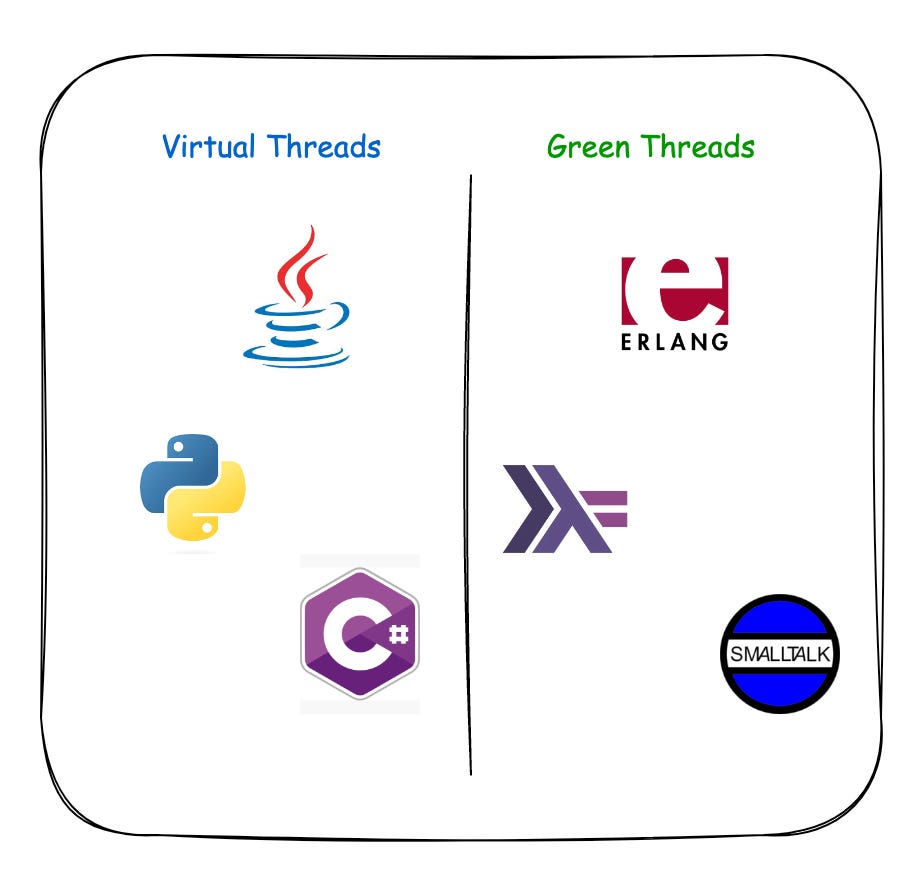What is the difference between Green Threads and Virtual Threads?
Which method is superior to the other one
Green Threads and Virtual Threads are lightweight alternatives to traditional Operating System threads, but they differ in how they are implemented and operated. There is a subtle difference between these two approaches, which causes them to perform differently:
Green Threads have an "M:1" mapping with OS threads, meaning all green threads operate on a single OS thread, while Virtual Threads have "M:N" scheduling, where a large number (M) of virtual threads run on a smaller number (N) of OS threads.
This difference in mapping with OS threads causes Green Threads to have some drawbacks in comparison to Virtual Threads:
Blocking behavior: When a green thread performs a blocking operation, it blocks the entire OS thread, preventing other green threads from running. While the virtual thread blocks on a blocking operation, it is unmounted from the OS thread, which allows other virtual threads to run on that OS thread. This prevents blocking the OS thread.
Scalability: Green threads could not effectively leverage multiple CPU cores since they ran on a single OS thread, while Virtual threads can scale across multiple CPU cores by running on multiple OS threads.
Memory footprint: Green threads had large, monolithic stacks allocated upfront, while Virtual threads have lightweight stacks that start small and grow or shrink as needed, reducing memory overhead.
Several programming languages have used or are currently using green threads or virtual threads. Here are some examples:
Green Threads: Java 1.1, Erlang, Smalltalk and GHC Haskell
Virtual Threads: Java 21, Python, and C#
Please note that this list is not exhaustive, and some languages or platforms may support green threads and virtual threads through different implementations or libraries.
You can also support me in buying a latte ☕️ !(one time or monthly):



